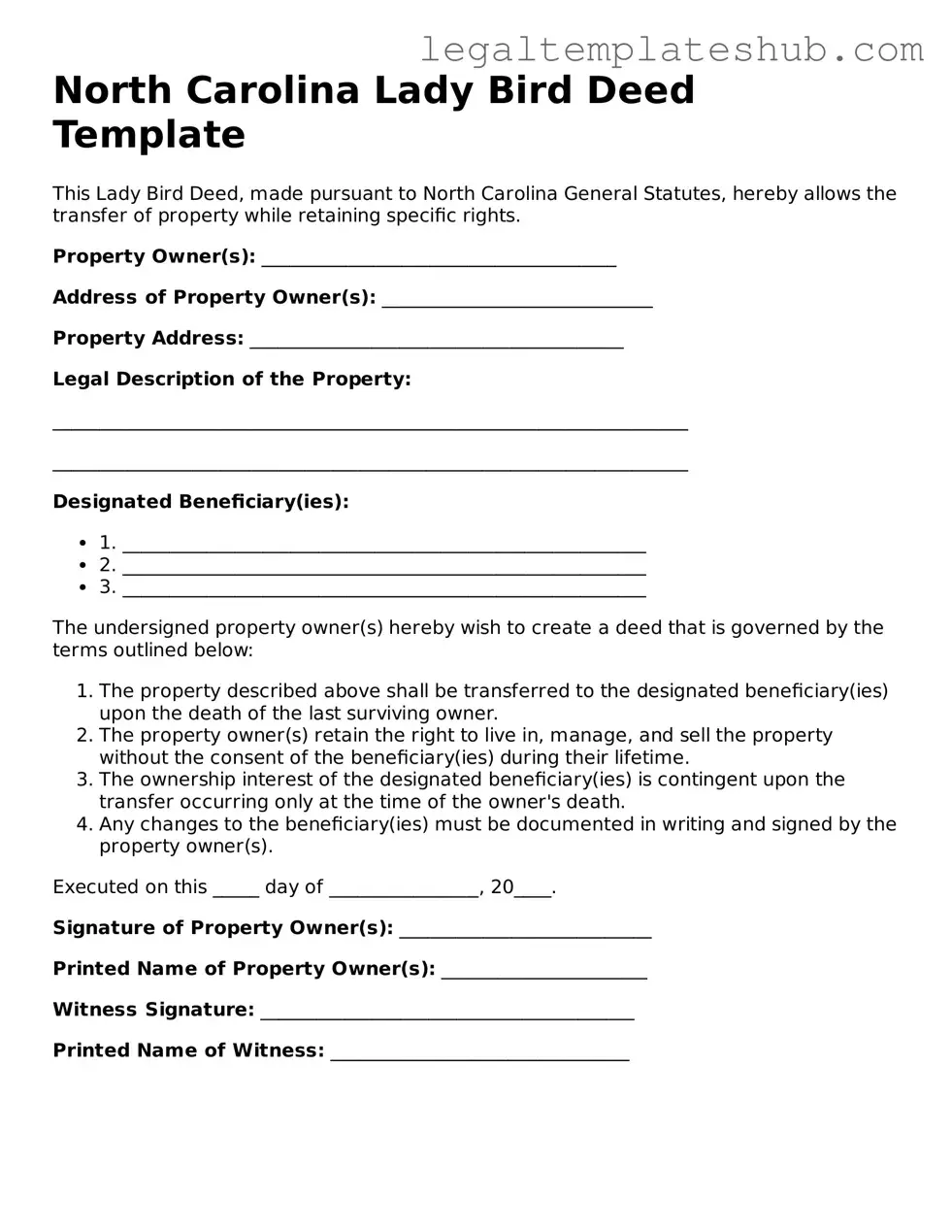Instructions on Filling in North Carolina Lady Bird Deed
Once you have the North Carolina Lady Bird Deed form in front of you, it’s time to dive into the details. Completing this form is an important step in ensuring that your property is transferred according to your wishes. Follow these steps carefully to fill out the form correctly.
- Gather Necessary Information: Before you start, collect all relevant information about the property, including its legal description, your name, and the names of any beneficiaries.
- Fill Out Your Name: In the designated section, clearly write your full name as the current property owner.
- Provide Property Details: Enter the complete legal description of the property. This may include the address and any parcel numbers associated with the property.
- List Beneficiaries: Write the names of the individuals who will inherit the property. Be sure to include their relationship to you.
- Specify Rights: Indicate that you retain the right to sell, mortgage, or otherwise manage the property during your lifetime.
- Sign the Document: After completing the form, sign it in the presence of a notary public to ensure its validity.
- File the Deed: Finally, take the signed and notarized form to your local register of deeds office to officially record it.
After completing these steps, your Lady Bird Deed will be officially recorded, allowing your beneficiaries to inherit the property without the complexities of probate. This proactive measure helps secure your wishes and simplifies the transition for your loved ones.
